This is a story of how we made $64 million from a $6,000 budget, & how you can too.
If you’re a marketer, then you’ve most likely heard of HubSpot.
I was fortunate enough to work for HubSpot for three years, from the start of 2015 to the end of 2017. It was without a doubt the highlight of my career (until I took on my current role at G2 Crowd, that is ?).
And if you’ve heard of HubSpot, then you have no doubt heard of content marketing.
Content marketing is one of those things that took the marketing and business worlds by storm. It’s a beautiful idea: Create content on your blog, then people will find it on Google, come to your site, and voila – more customers!
It’s a beautiful idea: Create content on your blog, and soon you will have more customers.
The crazy thing: It actually works.
But as with anything, once people realize how well it works, everyone starts doing it. Then it quickly becomes more and more difficult to do.
This blog post is about just that: how to make content marketing work for you in an age where everyone is a content marketer.
How to make content marketing work for you in an age where everyone is a content marketer.
First up, let’s get some definitions sorted out.
When most people think of content marketing, they think of blogging. Is that what you were thinking?
Now don’t get me wrong, blogging is still an incredibly important business tactic that I believe will be around for many more years to come.
It’s just that, there’s another tactic that you’ve probably not heard of before.
It’s called: free content tools.
Here are some of my favorite free content tools out there in the wild today:
1. Website Grader by HubSpot – This tool helps you grade your website in terms of mobile responsiveness, security, and search optimization – among other things.
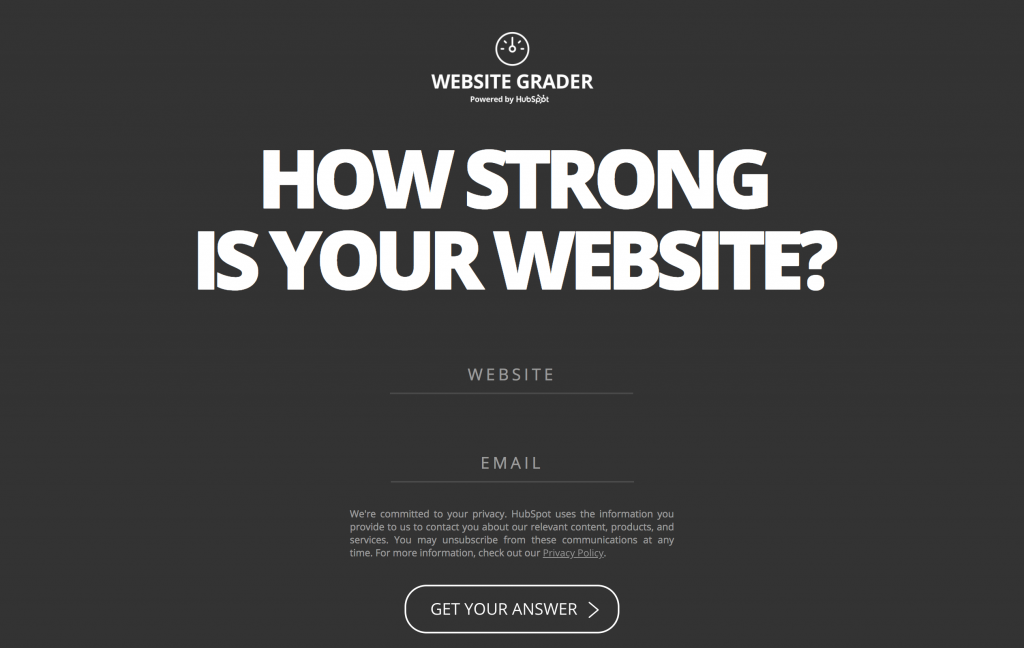
2. Slogan Maker by Shopify – All you need to do is enter a term that describes your business and you’ll get up to 1,000 relevant slogans for free.
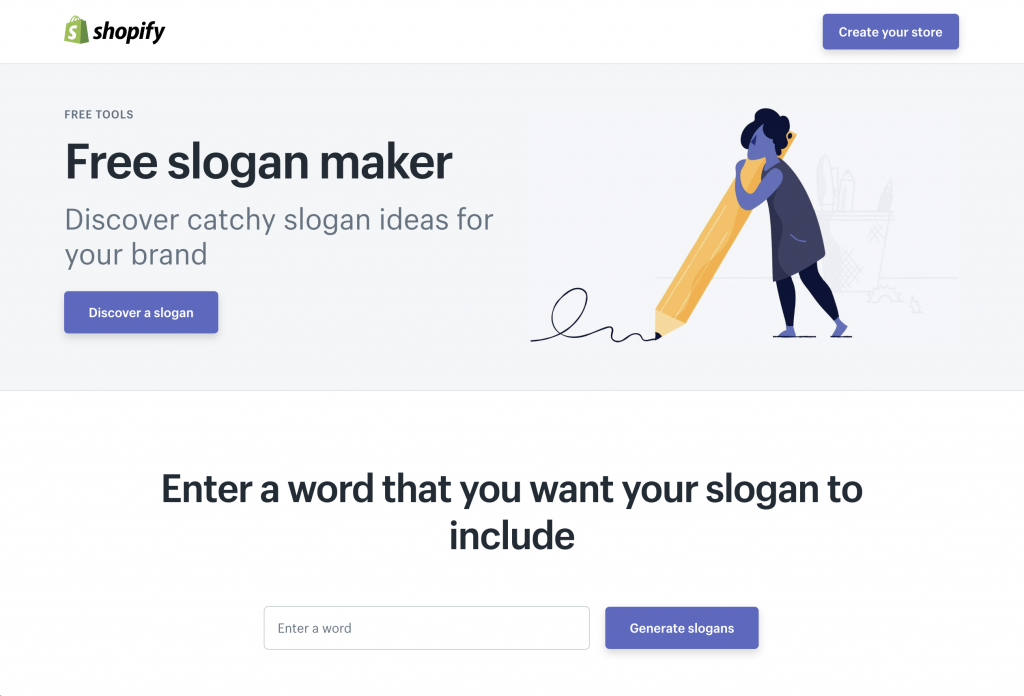
3. Headline Analyzer by CoSchedule – It helps you write great headlines so your content drives more clicks, traffic, social shares, and search results.
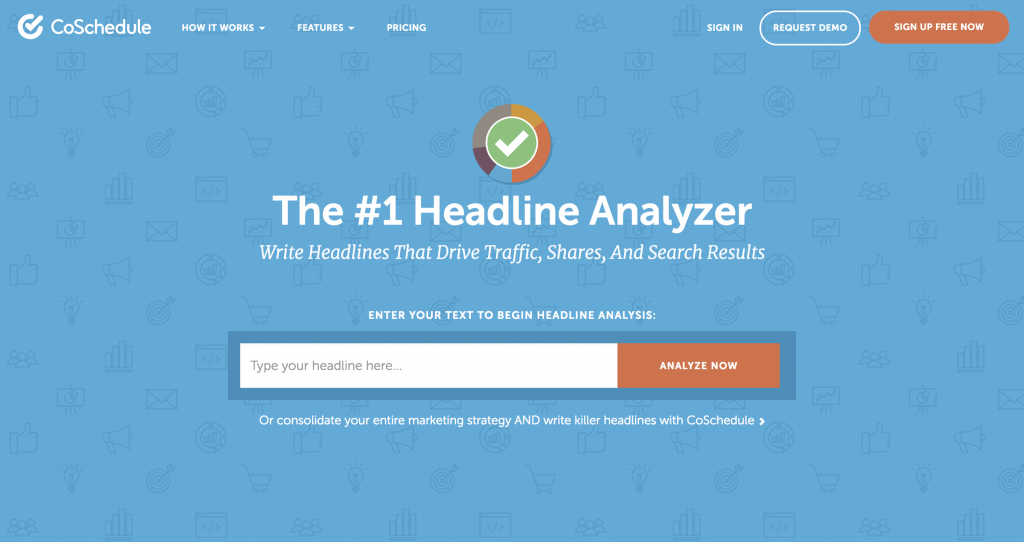
Hopefully, now we’re now on the same page as to what I mean when I say free tools?
Ok, awesome.
So, free content tools are great for many reasons, but the two I like most are that they make it:
- Easier to convert the traffic into a lead. Because free tools are almost always in some way interactive, you can build a lead gen request into the tool itself.It’s harder to do this with a blog post, unless the lead generation request is something highly relevant to the blog post (e.g. an offer to download an ebook on the same topic as the post – but this has been done so many times now, the conversion rates of this type of tactic are much lower).
- Easier to generate links. Because free tools are often quite unique and people find them more useful, they generate more organic links than do other types of content. And links are an important way for the search engines to confirm that your website is an authority on a certain topic, which will help the rankings of all of your pages (not just the free tool itself).
Ok, now that you have a little bit more context about free tools, lets jump into this $64 million marketing campaign? Sounds good.
It all started in my second year at HubSpot. I was leading the HubSpot marketing team based out of our Sydney office.
It was a long weekend, and I was doing a pretty thorough analysis of our website and blog content. As I got into the numbers, I started to realize that our traffic and leads were slowing down. It was as if we had hit a bit of a ceiling.
(I won’t go into detail on the analysis I was doing in the screenshot below, but if you’re interested you can read about it in an article I wrote for Entrepreneur Magazine.)
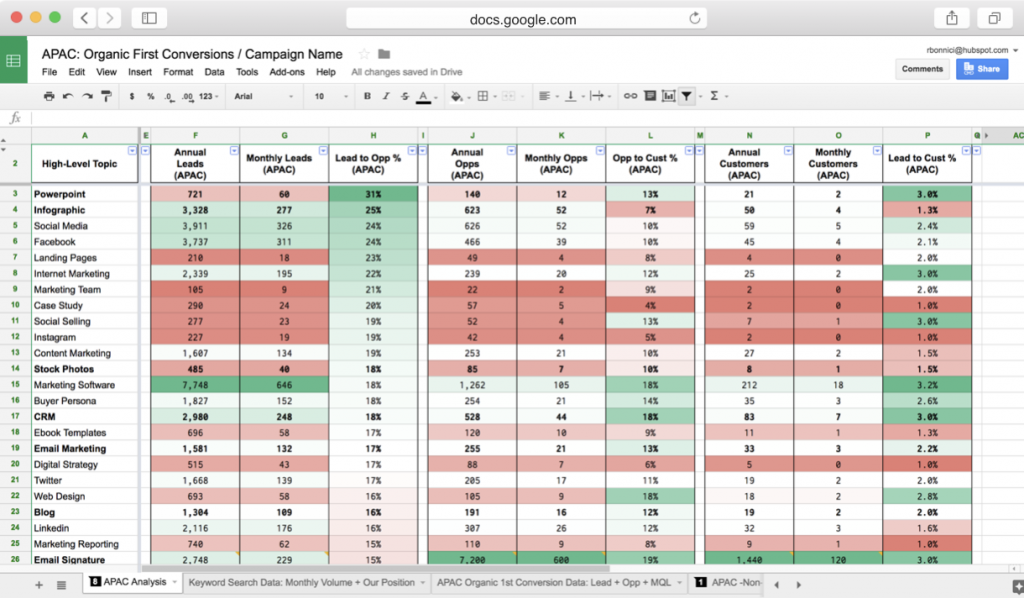
The TL;DR version of the story is: We had been creating a lot of content around the same topics, like marketing, social media, and other related topics, and we were no longer hitting new audiences.
I figured if we wanted to attract more small and medium business to our website, we would need to start creating content around different topics that they were looking for online (outside of the obvious topics, such as sales and marketing, since we had exhausted that).
So I sat down with a fresh new MUJI pen and book and started thinking about how an SMB business starts (side note: if you haven’t bought a MUJI notebook or pen, then you’re missing out – trust me). But I digress…
So, if you’re starting a new business, there are a few things that you do:
- You buy a domain name
- You get a logo designed (and maybe you buy business cards, too)
- You set up your email provider
- You create a snazzy looking email signature (probably in Gmail or Outlook).
Whenever I started at a new job, I always remember looking at what other email signatures my colleagues had, and then took the best of each of their signatures made my own.
Hot damn, what if we made an email signature generator!?!
It immediately felt right, and after doing some quick keyword research via Ahrefs (one of my favorite pieces of SEO software), I knew it was a winner: high volume (93k globally per month) and low competition (45/100 difficulty).

Oh, and you know how I was saying earlier that interactive tools have a higher conversion rate to a lead over blog posts…? Well, think of all the things that go into an email signature. Most people include their:
- Full name
- Job title
- Company name
- Email address
- Mobile phone number
- Work address
It’s quite a lot of information by most lead form standards… and we’d be getting all of it!

By this time, the long weekend was over, and I pulled together some of my ideas with two amazing marketers on my team: James Gilbert and Elissa Hudson.
- James was one of my first hires at HubSpot; he’s probably one of the smartest and most data-driven marketers I’ve ever had the pleasure of working with. This was the perfect project for James since nobody loves a spreadsheet more than this guy, and boy can he work his way around Excel.
- Elissa was one of my first content marketing hires at HubSpot. She’s one of those crazy dynamic people that can write like an award-winning journalist, while also knowing how to optimize-the-hell out of her content at the same time (a rare and dynamite combo). Elissa worked for an SEO agency back in the UK, and she always incorporated SEO tactics into any piece of content she created.
Elissa, James, and I all agreed that it was something that we had to make, but we didn’t know exactly how to go about building it (none of us had coding experience).
Fortunately, HubSpot has a pretty amazing network of partners, and we managed to find the perfect person for the job: Ken Semple of More Business Online.
Over the next month, we worked with Ken to build the tool, and before we knew it we were ready to publish it on the interwebs.

Now, the real work began.
Over the next few months, James and I focused our time on promoting the tool via HubSpot’s marketing channels: email, social media, etc. At the same time, Elissa got to work on community outreach to start generating some backlinks to the tool (so Google would start to notice it).
Elissa is a whiz, and almost immediately she had links from dozens of sites including Canva, Grammarly, and Sigstr.

And then we waited.
Fortunately it didn’t take long for us to move from the 10th page of Google, to the 5th page, and eventually the 1st page.
Within about six months we were generating 75,000+ visitors to the free tool per month. And those visitors were converting into approximately 50,000+ net-new leads per month.

I know…pretty crazy, right!?!
Over the course of 18 months, the tool absolutely dominated, making it HubSpot’s 5th-most visited page each per month (after the home page, and blog home).
HubSpot has published 1,000s of blog posts over the years, so it’s crazy to think that just one page like this – with a tool that cost only $6,000 to make – could drive so much traffic.

I recently heard from one of my colleagues at HubSpot, and they had some pretty cool news to tell me: Every six months the email signature was generating approximately:
- 500,000+ organic visits to the HubSpot website
- 51,000+ net-new leads for sales to work
- 1,500+ sales opportunities (that the sales team generated from the 51k leads)
- $8.5 million in net-new customer lifetime value
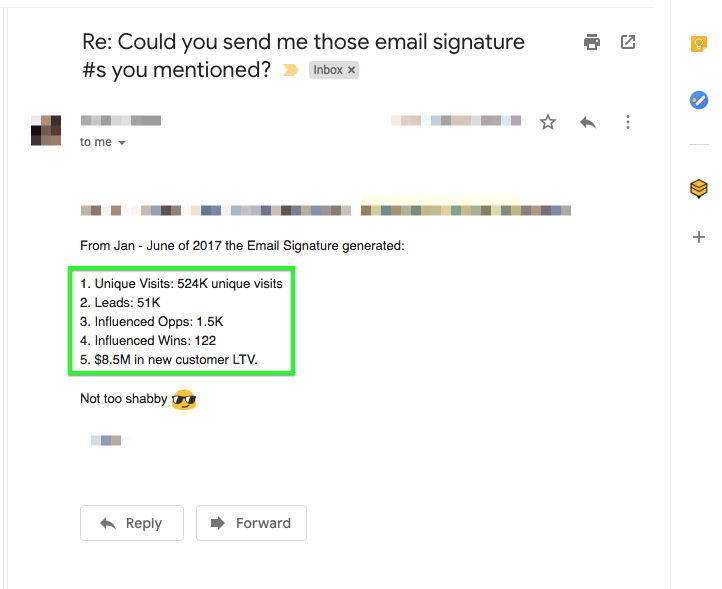
So, working on those rough numbers, the email signature generator has generated approximately $64 million in net-new customer revenue for HubSpot since it’s inception.
It was so successful that HubSpot has since launched a free invoice template generator and a marketing plan generator.
Now, I know what you’re thinking – my website is nowhere near as powerful as HubSpot’s. I’ll never rank like they did!.
That’s where you’re wrong.
I’ve actually done this a few times now, and I most recently had success with this tactic on my personal website: Executiv.Co. It’s a website I built a few years ago to help young executives grow in their careers.
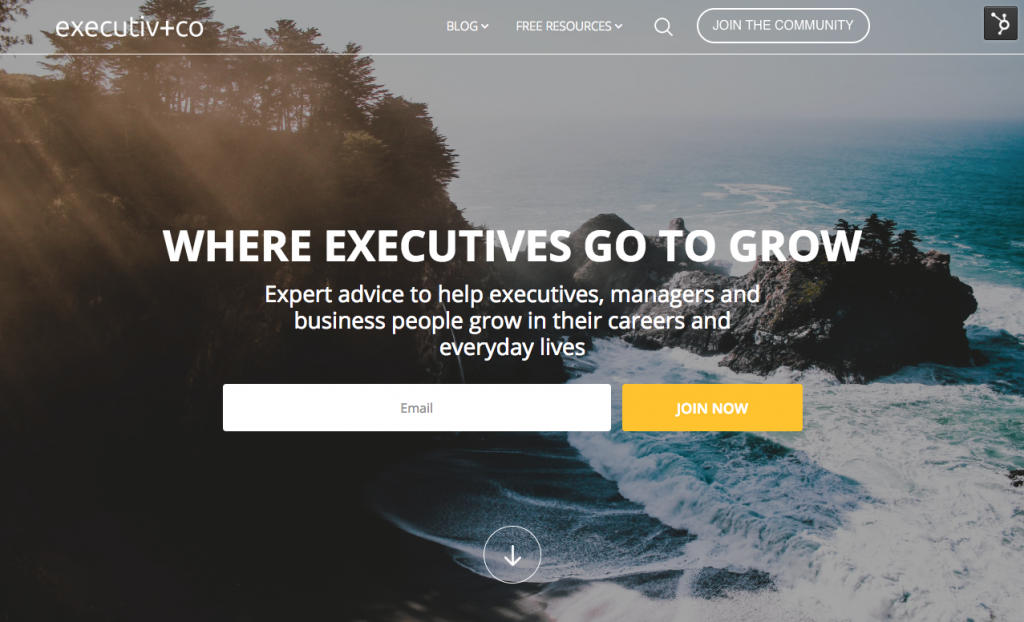
The free tool I created came as an idea from a book I was reading called the Five Dysfunctions of a Team. Inside the book there was a cool quiz that I thought would be useful as an interactive tool.
So I converted the various questions from the book into questions in a quiz, and then put it on a landing page on my website.
Now, if you search for “Five Dysfunctions of a Team Self Assessment” (which quite a few folks do each month), you’ll find my website as the first result:
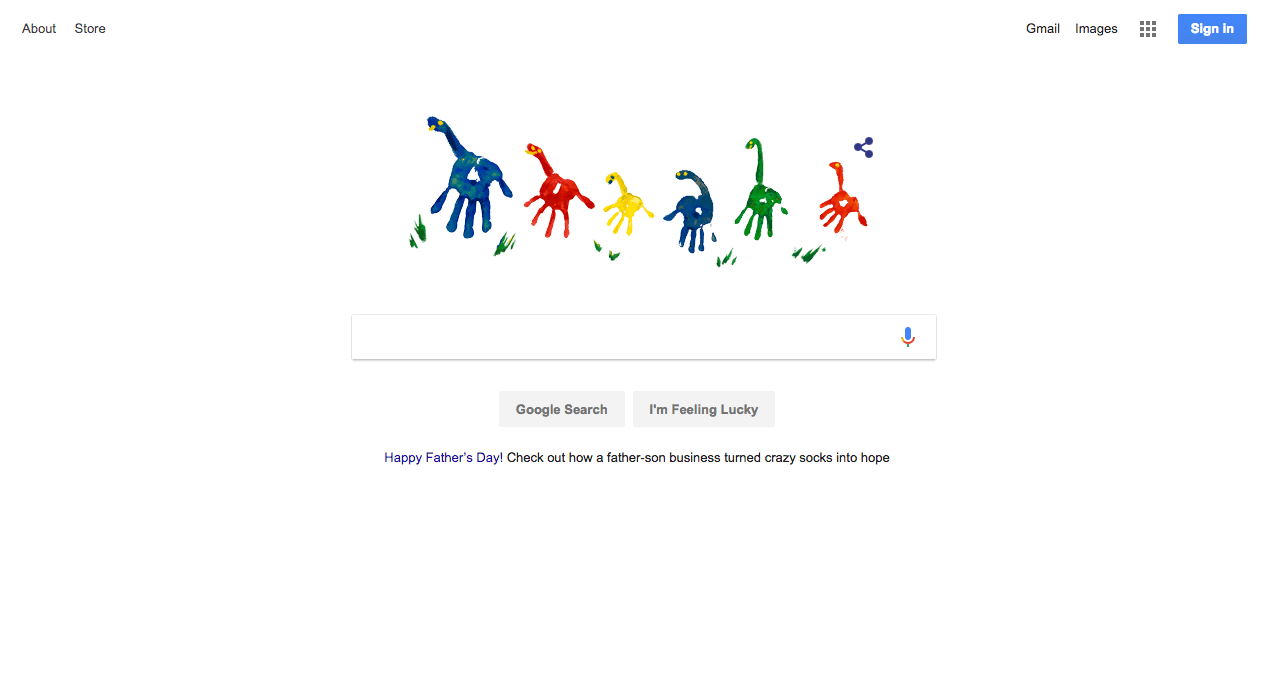
I love chatting with other marketers and growth-minded folks about cool and innovative free tools they can make for their businesses to drive website visitors, leads, and customers.
I’d be more than happy to give you some ideas for what kinds of free tools might work for your business.If you could share this post on your LinkedIn and tag me in the post (this is my Linkedin profile), I’d be more than happy to comment on the post with some ideas for you ;o.
Source: G2 Crowd




